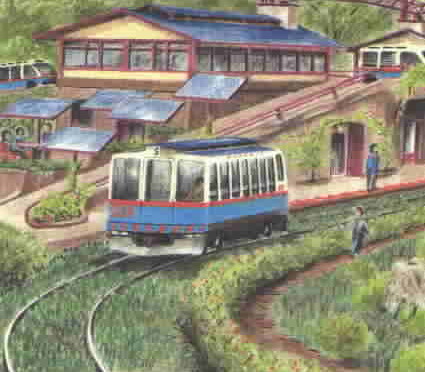Marin Voice, Marin IJ July 22, 2001
DWAYNE HUNN
RECENTLY THE IJ ran a column entitled “A golden opportunity for Marin,” supporting the federal government in acquiring 17,600 Mann acres that are being studied as a proposed U.S. Fish and Wildlife Service Refuge (USFWS).
The four authors wrote of the refuge program being voluntary, USFWS management applying only to properties acquired, the government paying fair market value, and of available funding.
Sounds reasonable. The devil, however, is in the Marin details.
As explained by exemplary USFWS officials, their programs should be lauded and supported — yet everyone of the so-far notified property owners strongly wants out of this voluntary, fair-market-value program. Why?
How would you feel as a farmer, rancher, land holding Catholic organization, raw landowner, bay front rod and gun club, or homeowners association — if you learned that for ten years, self-proclaimed environmental groups pushed the federal government to include your land in a Baylands Refuge and supplied them with the initial maps that started this process?
Or that the first few meetings were held without you, the property owner, being notified?
Might you skeptically see this as a strategy to overlay your land with a government program that causes costly headaches later? Ah, then you feel the pain of those 17,600-acre holders.
Most of these landowners know something about Marin. They know that 85 percent of the county is undevelopable, only about 4 percent of the land remains to meet community needs, housing and population growth has been minimal and for decades our transportation and workplace housing system is hemorrhaging.
Most of them also know about land and development.
They know the hardest part of doing something with the land lies not in the can-do building, but in politics and regulations.
The authors, who for decades have had the time to swap leadership roles in their respective organizations, know politics much better than the fanner, rancher, home and landowner. They have learned and acted on setting the political table to their advantage innumerable times, such as:
Ø Having the Marin Supervisors rule out a train stop at the St. Vincent’s /Silveira properties in Marinwood so their organizations could design the owners’ properties;
Ø Forcing developers to constantly spend money on arguments, studies and referendums, thereby wasting affordable housing and transit-solution resources;
Ø Hoodwinking the USFWS and the initially unknowing landowners a governmental overlay that could drain more time and money from landowners. A brilliant political bleeding strategy.
The authors imply that only they and the government can properly care for Mann’s lands. Yet, Tony Silveira’s family has for 100-plus years taken better care of his cherished land than any agency will.
Developers have turned toxic-sludge ponds into thriving pools. Shoreline homeowners have assessed themselves to dredge spoils and keep their bay thriving with wildlife. Farmers have monitored their land and runoff to keep their production clean, safe and profitable. Most of them have also supported the pollution reducing, community-building train plans and supported providing more housing for Mann’s tapped-out and increasingly bussed-in work force.
Why do all the property owners oppose being included in even the mapping study? Because they have learned enough politics to not trust anything that has – the blessing of Marin groups who mouth myopic environmental phrases but do nothing creative or imaginative for families, housing, traffic and pollution and energy conservation.
Our local agencies, groups and property owners are good at protecting Marin lands. Putting any of the 17,600 acres in a federal refuge is not a golden opportunity for families, housing, transit, pollution or energy conservation.
Dwayne Hunn of Mill Valley was part of a team that tried to build a 237-unit, solar-energy retirement community in an old quarry near downtown San Rafael.


